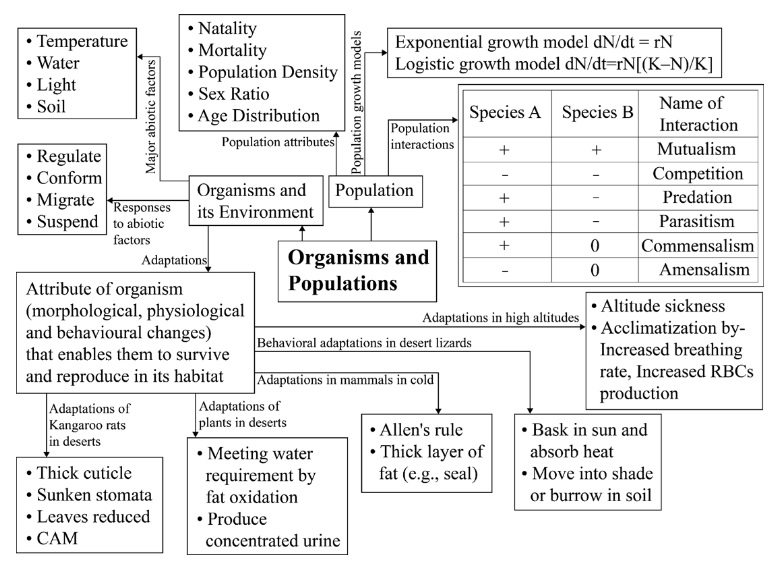NCERT Class 12 Biology Chapter 11: Complete Resource for Organism and Population
FAQs on NCERT Solutions for Class 12 Biology Chapter 11 Organisms and Populations
1. What are we going to study in Chapter 11 of Biology Class 12?
The chapter Organisms and Populations mainly revolves around organisms and their environment, different abiotic factors, response to these factors, adaptations, population, population growth, and much more.
The Topics Covered in This Chapter Are:
Organism and its environment.
Major abiotic factors.
Response to abiotic factors.
Adaptations.
Populations.
Population attributes.
Population growth.
Life history variation.
Population interactions.
2. How Can Students Access Solutions for Different Chapters in One Place?
Students can access all solutions by installing the Vedantu app from the play store. It is available for free use. The app lets you access solutions anywhere and at any time. You will also be able to attend a free live master class by installing the Vedantu app. Some of the students, while understanding Biology, face challenges, so with the aid of our expert teachers, Vedantu has made the subject easier to understand.
One of the important parts of Class 12 Biology study materials is our NCERT Solutions. To make your preparation for exams easier, our experienced and skilled teachers have created these solutions with the utmost care.
Download the NCERT solution PDF, also download the app from the Play store and enjoy the free access to live master class, NCERT Solution PDF, free concept videos, and much more.
3. How can I score well in Chapter 11 of Biology Class 12?
Scoring well in Chapter 11 of Class 12 Biology may often seem tough. However, it is not impossible. Practice and hard work put in while preparing for any chapter is the key to score well. Students should make sure that they understand all the concepts that have been taught in this chapter. Regular practice of writing presentable and precise answers can help students easily fetch marks in their Class 12 Biology board exam.
4. Is it important to practice NCERT Solutions for Chapter 11 of Class 12 Biology?
It is very well known that the question papers in Class 12 Board Exams are framed on the basis of the NCERT books that have been prescribed by CBSE. Practising NCERT Solutions for Chapter 11 of Class 12 Biology is hence important so that students are aware of the kind of questions that are asked in the board exams and how to answer these questions correctly without losing any marks. Students can download the PDF of NCERT Solutions free of cost from Vedantu's website and mobile app.
5. What are the important topics covered in Chapter 11 of Class 12 Biology?
It is important to focus equally on all topics that are a part of Chapter 11 of Class 12 Biology. However, certain topics have a higher possibility of being questioned in your biology exam. One important topic of Chapter 11 in which students can put extra focus on before their exam is Population Interactions. Both short and long-answer questions can be asked from this topic in the Class 12 Biology Board Exam.
6. Why does a marine fish placed in a freshwater aquarium have less possibility of surviving?
According to NCERT Solutions for Class 12 Biology Chapter 11 - Organisms and Populations, the possibility of surviving decreases when a marine fish is placed in a freshwater aquarium because of its body being adapted to the high salt concentrations of the marine environment. Since the fish cannot control the water entering its body through osmosis, it leads to its body swelling up and eventually death of the marine fish.
7. What is a Morphological defence mechanism?
As discussed in Chapter 11 - Organism and Populations in Class 12 Biology, Morphological Defence Mechanism is one of the important types of defence mechanisms performed by plants like a cactus having leaves modified into sharp thorns to deter herbivores from feeding on them. Some plants, as a way of using a morphological defence mechanism, have margins of their leaves that are spiny or have sharp edges that stop insects from eating them.
























